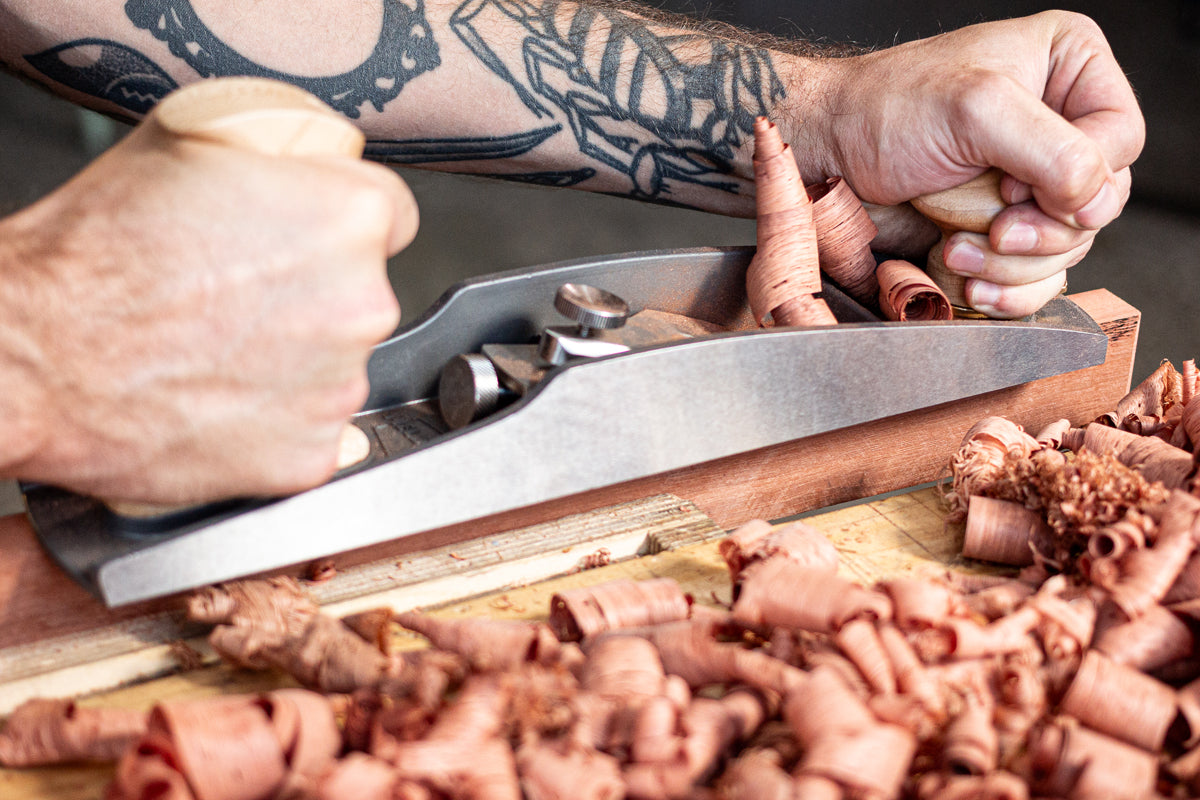Choose a bevel-up jack plane to level up your plane game. We put nine low-angle jack planes through their paces to see which models edged out the competition.
The WOOD Magazine
Low-Angle Jack Planes
If you're looking for a single plane that can do just about everything, look no further than a low-angle jack. This plane excels at cutting end grain, and its bevel-up design allows you to sharpen the blade at different bevel angles to handle whatever planing challenges come your way (Benefits of Bevel-Up on page 53). Even if you already own several bench planes, adding a low-angle jack to your lineup will increase your planing versatility.
Just a couple of generations ago, if you wanted to buy a low-angle jack plane, your only option was to hunt down an old Stanley No. 62. But a quick search today reveals lots of choices. To get the lowdown on these low-angle jacks, we compared new planes from nine manufacturers on a number of points. We looked at sole and blade flatness, adjustability, steel quality, performance, and overall fit and finish. Despite the fact that all of these planes trace their roots back to the original Stanley version (and our test includes a modern iteration of that plane), that doesn’t mean they are all the same. We discovered definite standouts in terms of features and performance, along with a couple of surprises. For the important plane specs, see the chart on page 52.
Prepare for Takeoff
First impressions are important, and here the Veritas Low-Angle Jack Plane, Lie-Nielsen No. 62, Bridge City HP-12, Melbourne Tool Company Low Angle Jack Plane, and Stanley No. 62 Sweetheart all showed up at the gate well packaged, with polished and flattened blades that were ready to use right out of the box. All of the other planes required some degree of honing or flattening. As you might expect, the performance increased significantly for the planes that did not come with blades already flattened and polished.
Good for the Sole
A plane with a twisted or warped sole, or with low spots around the mouth, won’t give good results. All the planes proved acceptably flat enough to start using immediately. The soles on the Veritas, Lie-Nielsen, and Bridge City planes were flat to within .001", but all of the others had some minor twist, warp, or low spots. We were able to remedy these with a quick pass on some sandpaper on a flat reference surface, and we were then able to get great results from all of the planes.
Life on the Edge
All of the planes in our test feature heavy-gauge blades, ranging from 1/8" to nearly 1/4" thick. The planes with A2 and PM-V11 steel took longer to hone because of the harder steel, but they also held their edge longer. The blades on the Veritas, Lie-Nielsen, Bridge City, Melbourne Tool Company, and Stanley planes all arrived with flattened backs. All but one of the planes arrived with accurately ground, 25° bevels. The Bridge City plane comes standard with two blades, each sharpened at both ends, giving you three bevel options (25°, 30°, and 42°) as well as a toothed edge for fast stock removal across the grain. The Lie-Nielsen plane is also available with two optional blades, one with a 38° bevel and one with a toothed edge. Veritas offers a wide variety of optional blades, while the Melbourne and Stanley planes are available only with a standard blade.
Turn the Screws
All of the planes feature an adjuster for setting the blade depth, and these can be divided into two styles: single-screw adjusters and Norris-style adjusters. The single-screw adjusters on the Bench Dog, Grizzly Premium No. 62, Lie-Nielsen, and WoodRiver planes feature a threaded rod with a flanged knob or small shoe that engages a notch in the back of the blade. The Norris-style adjusters use a more elaborate rod with dual screw threads, allowing for more precise depth control. This adjuster style also allows you to make lateral adjustments to the blade, while planes with single-screw adjusters require making lateral adjustments manually. The Bridge City plane uses a sliding knob with an eccentric lever for depth adjustments.
Benefits of Bevel-Up
Traditional bench planes feature a blade that rests with the bevel down on a bed, known as a frog, that sits at a fixed angle (usually around 45°) to the plane's sole. The bed on a bevel-up plane is milled into the body of the plane, at a much lower 12° angle. But the real benefit of bevel-up planes lies in the ability to change the cutting angle by means of the bevel angle on the blade. You can use a low angle on end grain, a medium angle for routine planing, or a high angle when planing highly figured woods. We suggest purchasing optional blades with alternate bevel angles, if available, or buying extra standard blades and regrinding them yourself.
Planing Performance
In terms of sheer planing performance, the Lie-Nielsen, Veritas, and Bridge City all produced smooth, nearly flawless surfaces in face grain and end grain. We were pleasantly surprised to find that the Stanley (the least expensive in our test) and the newcomer Melbourne Tool Company were not far behind. The better planes performed great right out of the box, and the others required sharpening and tuning, but once that was done, their performance increased significantly.
Where the Planes Land
The selection comes down to ease of use and smoothness of adjustment, as well as the time and effort required to bring each plane to peak performance. We ended up with a tie for Top Tool honors between the Veritas and Lie-Nielsen planes. Our Top Value award was also a tie and goes to the Melbourne Tool Company and Stanley planes.

